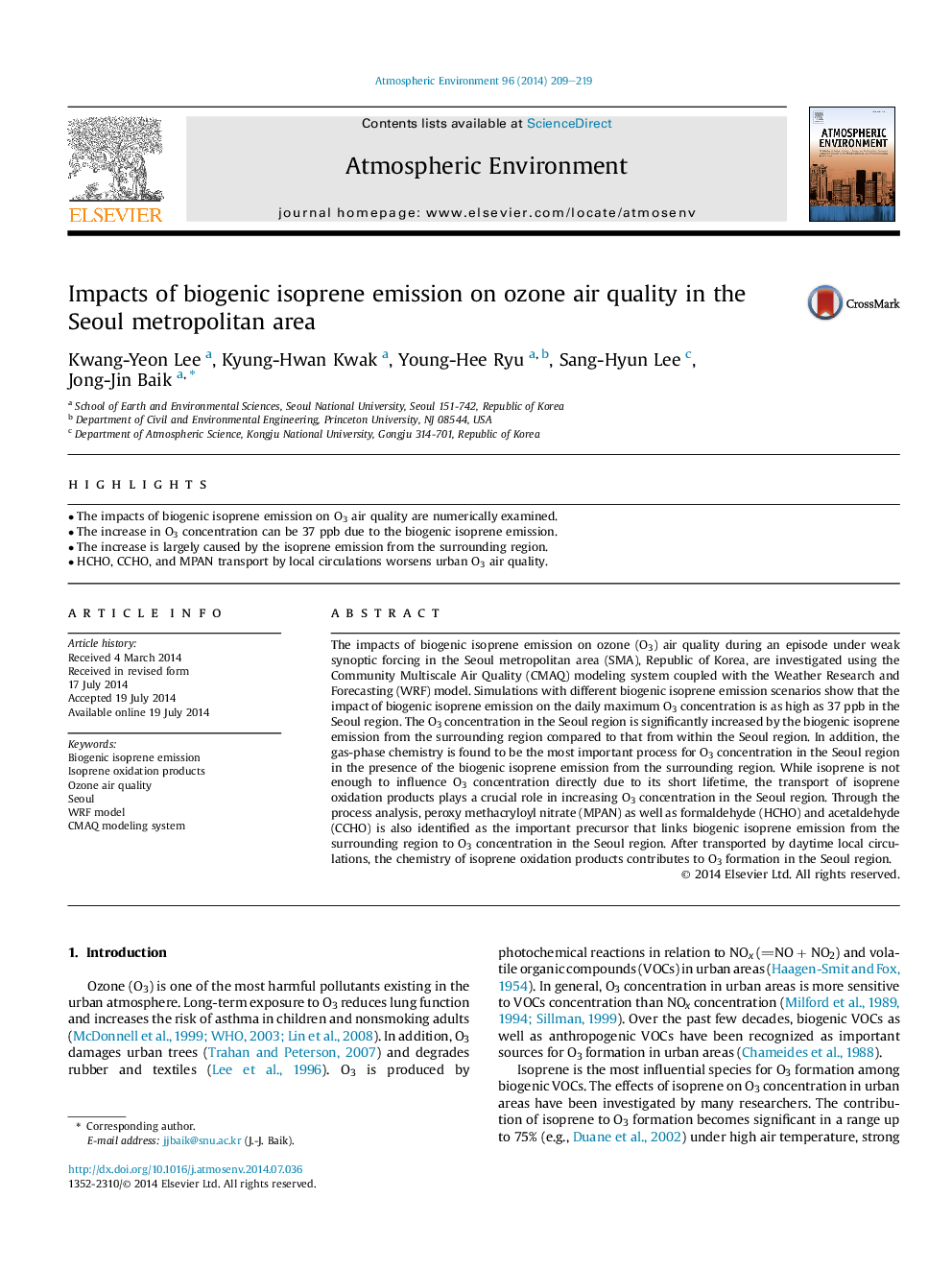| کد مقاله | کد نشریه | سال انتشار | مقاله انگلیسی | نسخه تمام متن |
|---|---|---|---|---|
| 6339931 | 1620375 | 2014 | 11 صفحه PDF | دانلود رایگان |
- The impacts of biogenic isoprene emission on O3 air quality are numerically examined.
- The increase in O3 concentration can be 37Â ppb due to the biogenic isoprene emission.
- The increase is largely caused by the isoprene emission from the surrounding region.
- HCHO, CCHO, and MPAN transport by local circulations worsens urban O3 air quality.
The impacts of biogenic isoprene emission on ozone (O3) air quality during an episode under weak synoptic forcing in the Seoul metropolitan area (SMA), Republic of Korea, are investigated using the Community Multiscale Air Quality (CMAQ) modeling system coupled with the Weather Research and Forecasting (WRF) model. Simulations with different biogenic isoprene emission scenarios show that the impact of biogenic isoprene emission on the daily maximum O3 concentration is as high as 37Â ppb in the Seoul region. The O3 concentration in the Seoul region is significantly increased by the biogenic isoprene emission from the surrounding region compared to that from within the Seoul region. In addition, the gas-phase chemistry is found to be the most important process for O3 concentration in the Seoul region in the presence of the biogenic isoprene emission from the surrounding region. While isoprene is not enough to influence O3 concentration directly due to its short lifetime, the transport of isoprene oxidation products plays a crucial role in increasing O3 concentration in the Seoul region. Through the process analysis, peroxy methacryloyl nitrate (MPAN) as well as formaldehyde (HCHO) and acetaldehyde (CCHO) is also identified as the important precursor that links biogenic isoprene emission from the surrounding region to O3 concentration in the Seoul region. After transported by daytime local circulations, the chemistry of isoprene oxidation products contributes to O3 formation in the Seoul region.
Journal: Atmospheric Environment - Volume 96, October 2014, Pages 209-219
